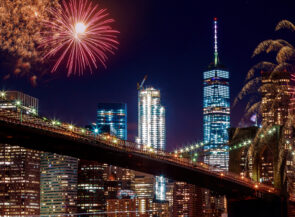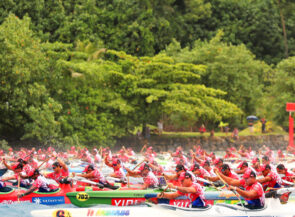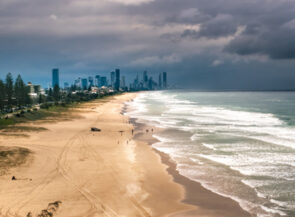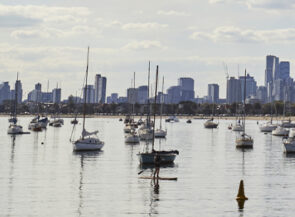Brisbaners, writes local author Matthew Condon, have always had “chips on their shoulders.” Founded in 1824 as a penal colony for unruly prisoners from neighboring New South Wales, Brisbane has long been overlooked for the glitter of Sydney and the gravitas of Melbourne. Perhaps this was once true, but no longer. Today, the city bristles with an arriviste’s passion, with new hotels, world-class restaurants, hidden cocktail bars, boutiques, and music venues opening at an alarming clip. The city’s very contours, hugging the Brisbane River as well as the coast, have been transformed by civic projects and cultural enterprise. Barely an hour away, on the Gold Coast, are some of the world’s greatest surf breaks, and the Scenic Rim boasts an unbelievably picturesque mix of wineries, mountains, and forests in a volcanic caldera. Brisbane, the capital of Australia’s Sunshine State, is at last having its moment in the sun.
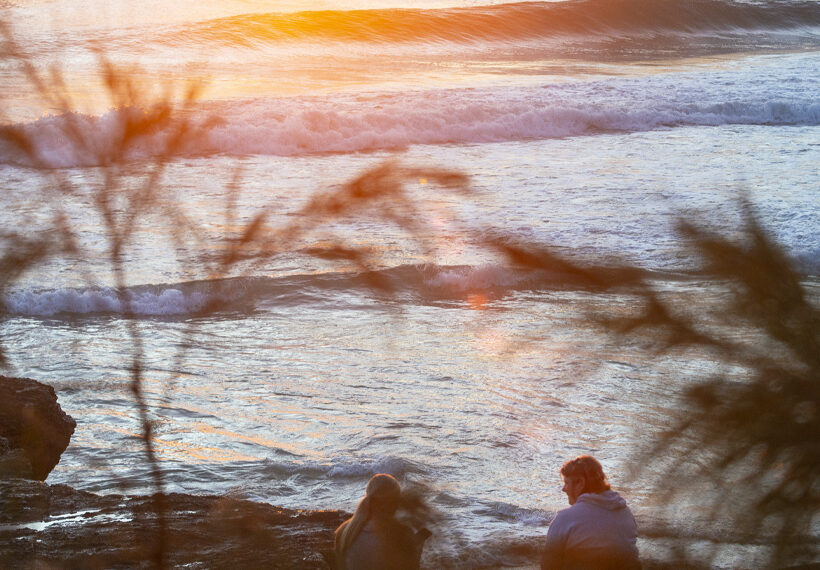
Day 1
Flat whites, rose gardens, and indigenous art in Brisbane
By some divine providence (and a Boeing 777) I have arrived early in the morning in the heart of flat-white country. A flat white is a slightly milkier cappuccino native to Australia. Before arriving in Brisbane, I’ve only had simulacra, served by Aussie expats in the cafes of Brooklyn. They are, I now know, pale imitations. As soon as I check into The Calile Hotel in Fortitude Valley, one of the city’s coolest neighborhoods, I order one.
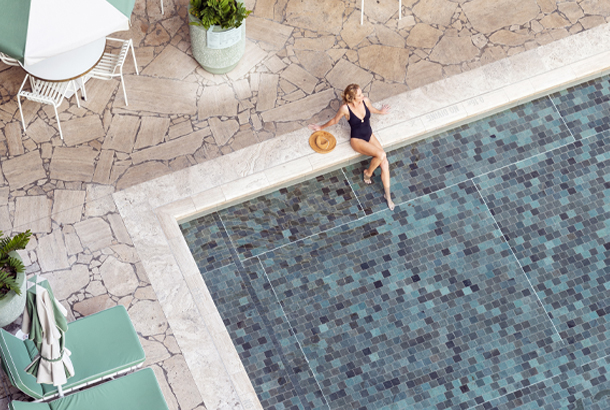
It emerges with an elaborate rosette formed in the foam, and one sip delivers me into dairy oblivion.
After the long flight, I’m keen to walk. Coffee in hand, I make my way down James Street, which is lined with cute boutiques, bars, restaurants, and cafés. Along the way, I stop at Agnes Bakery, recently opened by Ben Williamson, one of Brisbane’s most buzzed-about chefs. His fine-dining restaurant, Agnes, is impossible to get into, so I settle for one of his ever-changing selection of kouign-amann—today’s flavor: cinnamon—and a glistening apple danish.
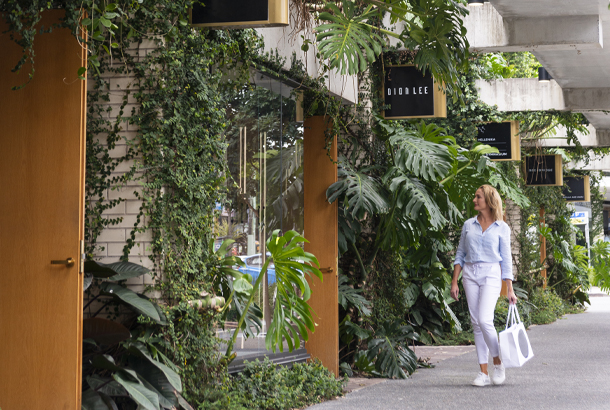
A 15-minute stroll on winding roads that remind me of San Francisco brings me to New Farm Park, one of the city’s oldest and largest green spaces. Already, Brisbaners are up and about. Some do yoga. Others wander among the rose garden. Still others sit along the river’s edge, watching ferries come and go. (Brisbane doesn’t have a subway, but its ferry system, the CityCat, continuously tools the waters.) The midday heat has not yet come, though already the sun paints the 7,000 rose bushes in the majestic garden golden.
From New Farm, I follow the river along the Submariners’ Walk Heritage Trail, a reminder that during World War II this city was swollen with 800 U.S. seamen and around 70 submarines. All that’s left of the base today are a few brick buildings and this lovely quayside walk past submarine-shaped benches. By the time I make it back to the hotel, the temperature has risen, and I take a quick dip in the outdoor pool, marveling at the skyline made up of equal parts skyscrapers and construction cranes—an indicator that Brisbane is still a city becoming.
Much of the development is happening along the Brisbane River, which winds through the city like the Arno or the Seine. Unlike in New York, where the Hudson seems like an existential border, the north and south banks of the Brisbane feel as one; life clings to both. In fact, many trace the birth of “New Brisbane” to the 1988 World Expo, which transformed the river’s edge of South Brisbane from a warren of pubs and factories into a pedestrian-friendly cultural power strip.
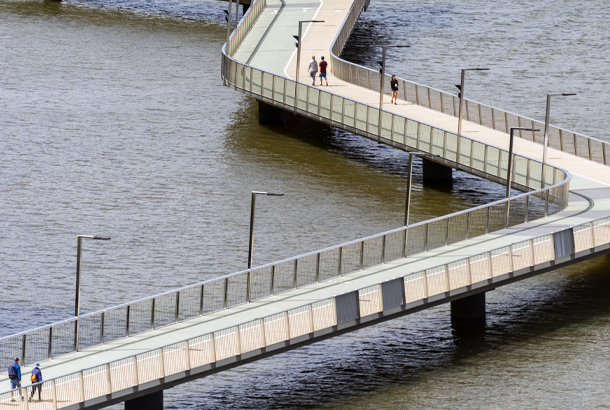
Anchoring the South Bank are the Queensland Art Gallery and Gallery of Modern Art, which are collectively known as QAGOMA. Cosmopolitan Australians have long thought of Brisbane as a backwater, but QAGOMA has done a lot to dispel that stereotype. The 20,000-work collection, specializing in Australian, Indigenous, and Asian Pacific art, is world-class. I take in an exhibition called Embodied Knowledge, a survey of works by contemporary Queensland artists, including a bizarro fish tank sculpture by Erika Scott and Obery Sambo’s otherworldly modern masks.
At this point, I’m famished. I stroll through the Grand Arbour, a bouganvillea-lined curling steel structure, toward Otto, a sun-dappled Italian spot which recently moved into a new home at the base of the Goodwill pedestrian bridge, for a bite: a dozen Sydney rock oysters, strozzapreti with blue swimmer crab, and a glass of rosato.
After another flat white, I check in on Troy Casey and Amanda Hayman, an Indigenous couple who opened a gallery, Aboriginal Art Co., in 2021. “It is really important that Indigenous people have agency in the arts,” Hayman says. “Aboriginal Art Co. is a safe place where we can share living culture, including our art and stories.” Housed in an old bank building in South Brisbane, the space is bright and full of color. Stirring paintings by Sam Harrison, wooden egrets sculpted by Bob Ali, and woven baskets and vibrant patterned dresses from Magpie Goose are carrying the mantle of other local Indigenous artists, like the collective ProppaNow, who for the last two decades have been using Brisbane as their base to explore what Indigenous art looked like beyond “dot drawings.”
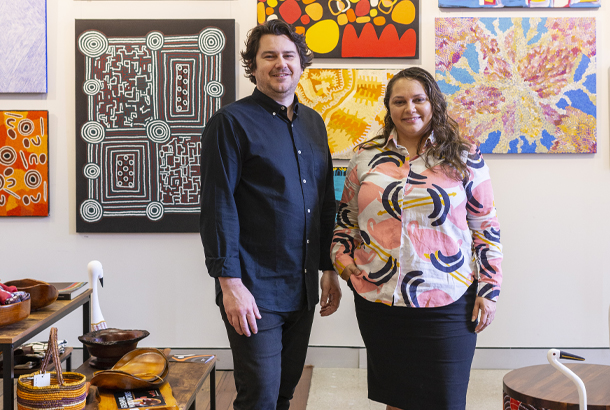
My mind is buzzing about Brisbane old and new as I make my way back across the river to the Howard Smith Wharves. Sheltered by a cliff, the new development represents a pedestrian-friendly, socially minded Brisbane. What was once a major shipping port—and was then abandoned for many years—has been reborn as a public space full of restaurants, cafés, and communal areas. Leisure seekers run to and fro, tossing Frisbees and stretching themselves on blankets in the fading light.
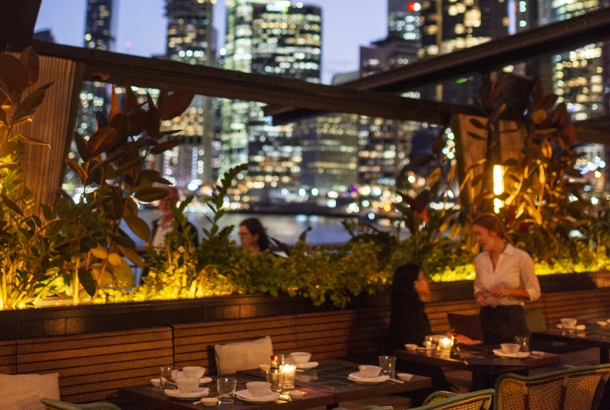
I’ve come to the Wharves to meet Louis Tikaram, a chef who grew up in Byron Bay and worked at E.P. & L.P. in Los Angeles before moving back to Brisbane in 2019. Tikaram opened his Cantonese restaurant, Stanley, in a red-tile-roofed building that was once the water police station. The past couple of years have been tough, but there have been some benefits, Tikaram says: “One consequence of the pandemic is that since our purveyors couldn’t sell abroad, we chefs benefited from getting the first pick of the absolute best product. Now that the country has opened up again, we already have these wonderful relationships.” A procession of dishes drives home his point: steamed scallops with vermicelli, black bean, and coriander; spring rolls stuffed with Moreton Bay bug, a local slipper lobster; bok choy from a farm Tikaram visited just this morning. “What’s wonderful about Brisbane,” he tells me, “is your connection to the farmers is so close.”
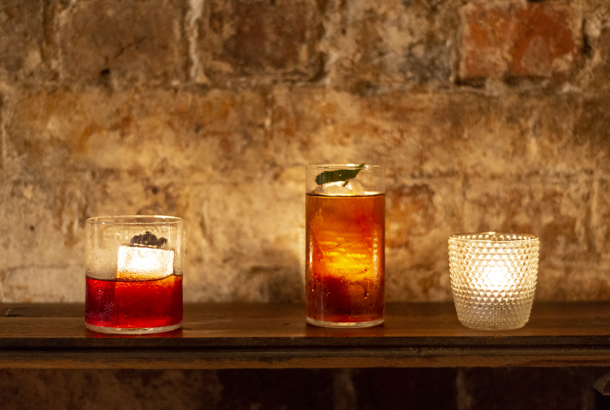
I could go to sleep, and honestly I probably should—Brisbane is an early-to-bed, early-to-rise city. Yet, I find myself in a car, on the way to Before + After, a new amaro bar in the Central Business District. It takes a good 15 minutes of wandering around the alleyways before I find the unmarked door off George Street. Dimly lit and full of people so attractive I immediately start staring at my phone out of insecurity, Before + After stocks an impressive quantity of rare and vintage amari. I settle onto a couch near the gramophone and order a Negroni, made with beeswax-washed gin, Campari and vermouth and finished with a local lavender flower. Like the city itself, it’s surprising, complicated, and goes down easy.
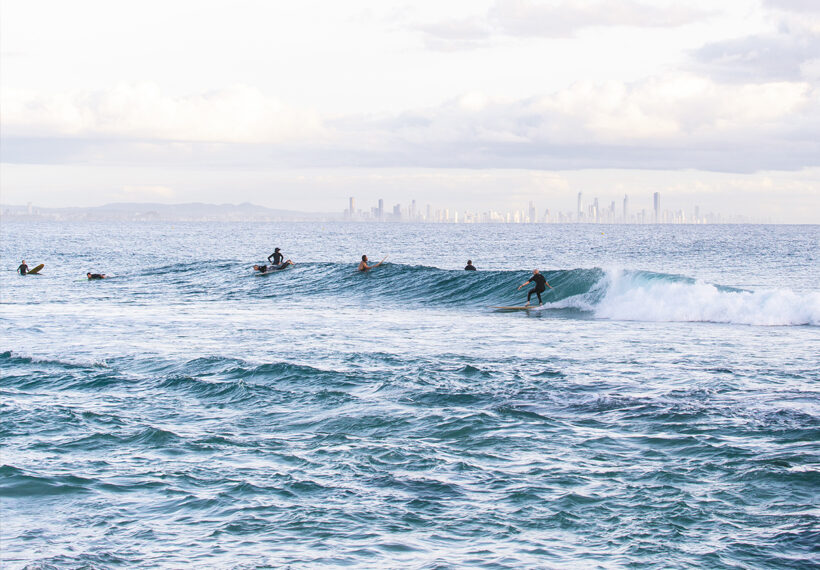
Day 2
Surfing, koalas, and delicious bug rolls on the Gold Coast
Just an hour south of Brisbane, the Gold Coast feels like the Jersey Shore after a major glow up. On average, the sun shines 300 days a year here—hence the name. Well, actually the name originated from the rapid rise of real estate prices after an influx of residents in the 1950s… but sun is a better story, and there’s no denying its brilliance. The city of Gold Coast is large, gleaming with highrises and strung out on the coastline from just south of Brisbane all the way to New South Wales, with nearly 50 miles of pristine beach pressed up against the Pacific. It’s a surfer’s paradise—which is actually the name one of its suburbs.
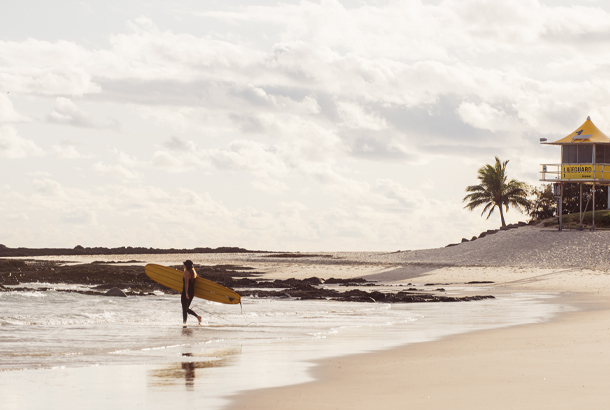
Surfers, despite their slacker reputation, are early risers—the best swells tend to be at dawn—so I’m out the door of my hotel by 6 a.m. I’ve heard chatter about Currumbin Alley since my arrival in Queensland, and I could hardly sleep for the excitement. As a Brooklyn surfer, I know the battle of quick-breaking sets, dyspeptic locals, and choppy waves that is the Rockaways. The Gold Coast, on the other hand, promises waves that powerfully and leisurely roll in, carrying surfers as gently as the ones that brought Odysseus into Nausicaa’s arms.
Surf schools dot the Gold Coast, and the Get Wet Surf School is perfect for beginners or people like me who could use a refresh. I practice popping up, first on the sand and then in the whitewash, and finally feel ready to venture out on my own.
I drive south to Currumbin, one of the Gold Coast suburbs, where Currumbin Creek empties into the Pacific Ocean, forming Currumbin Alley. This is one of the handful of world-class breaks on the Gold Coast, albeit a less crowded one than Snapper Rock or Burleigh Heads. In the parking lot, I quickly find a truck loaded with rental boards, hilariously and corporately called Surf Services Australia. I rent a foam board—sadly the only kind available—and a wet suit (though the water is so warm I hardly need it) and paddle out. I share the water with 40 or so other surfers, and over the next two hours I catch a dozen waves, which present themselves as eagerly as a cat wanting cuddles. And, because the waves themselves are so long, as I ride I’m able to take in all of the Gold Coast, shimmering ashore and growing gradually closer.
By the time I get out of the water, I’m spent, happy, and hungry. On the south side of Currumbin, on a place called Elephant Rock, sits the Currumbin Beach Vikings Surf Life Saving Club. The club, founded in 1919, supports and trains lifesaving, which is both a literal thing (they volunteer as lifeguard patrols) and a sport (they run around and swim and stuff). This is all fascinating, but I am more interested in the restaurant, which is open to the public. It’s a good old-fashioned greasy spoon with a million-dollar view. After two hours of glorious surfing, my bacon, egg, and cheese sandwich hits the spot.
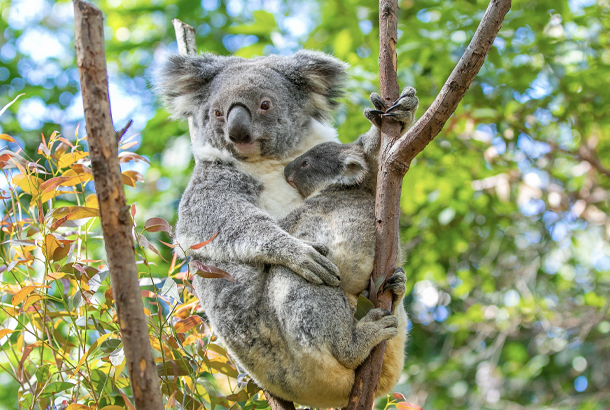
While it’s easy to keep your gaze toward the sun and your body on the sand, that would be a mistake. One of the Gold Coast’s great charms is that it’s a beach face for a jungle body. Since I’m heading to the Scenic Rim for a day of bushwalks tomorrow, I make my way to the Currumbin Wildlife Sanctuary for a quick preview today. Like the Gold Coast itself, the CWS has both outer-and inner-facing aspects. Outwardly, it’s a charming zoo that houses koalas, lorikeets, echidnas, red pandas, and more. I peer at a pair of koalas clinging to a tree trunk as they peer back at me. I think, God, how cute, though I doubt they’re thinking the same about me. Inwardly, the sanctuary runs one of the country’s elite animal hospitals, as well as 15 other conservation initiatives, including a koala vaccine program. It turns out that more than half of all koalas suffer from chlamydia, which can cause blindness, infertility, and death. “The species is now considered endangered,” Dr. Michael Pyne, the CWS’s head veterinarian, tells me, “and without programs like this, they still face the very real possibility of extinction.” Thankfully, the program’s been working: Ten joeys have been born to vaccinated koalas over the past year.
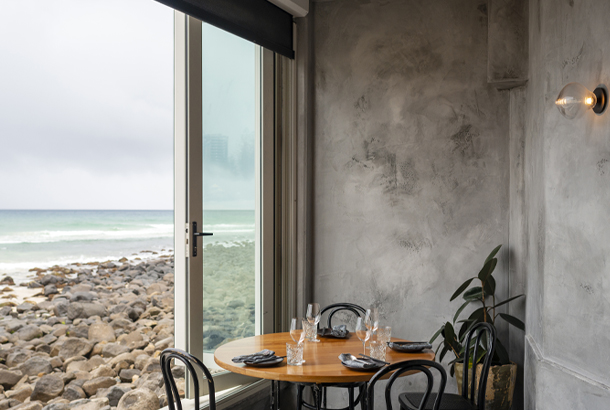
Last night, Louis Tikaram, the chef of Stanley, recommended I spend time in Burleigh Heads, near where he grew up—“It’s still got a small-town feel,” he told me—so to Burleigh Heads I go. First stop is a quick bite at Rick Shores, a beachside, seafood-focused, pan-Asian spot popular with both tourists and locals. (The name is a joke; in non-rhotic accents, like Australian, it’s pronounced “rickshaws.”) Like everyone else here, I order the Moreton Bay Bug Rolls, a slider-like milk bun roll piled high with lobster. Like everyone else here, I gaze out at the ocean and the surfers carving parabolas in the waves. Like everyone else here, on the Gold Coast, I feel golden.
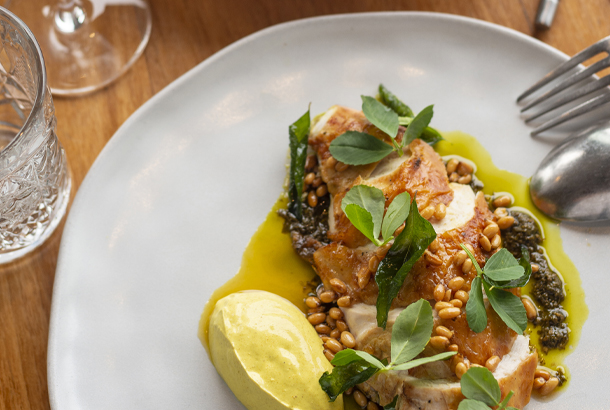
Next, I make my way to boutique-lined James Street. Among the most intriguing shops are Emte, a tiny space specializing in women’s wear from Aussie designers, including Blanca and Kinga Csilla, and Sean Scott Boutique, a home and clothing store run by one of Australia’s greatest nature photographers. At the latter, especially, there’s plenty to covet—starting with the hand-poured Japanese honeysuckle candle—but, ironically, the only thing I leave with is a new pair of German-made Birkenstocks.
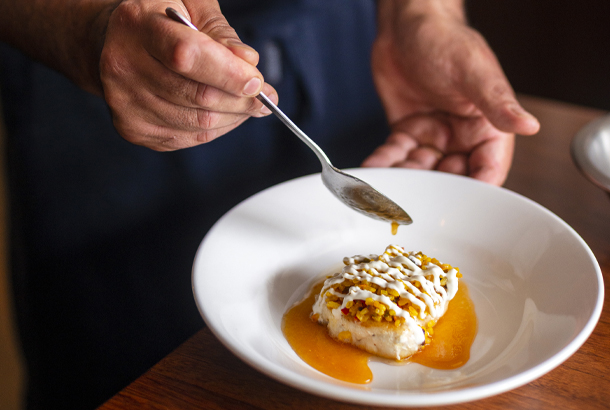
It’s still early, but it’s time for dinner. Miraculously—or perhaps thanks to Tikaram’s intercession—I score a table at Alex Munoz Labart’s Restaurant Labart. The rap on resort-town dining is that it’s either shticky or crummy, but Labart is neither. It’s a relaxed yet ambitious fine-dining restaurant with a four-course prix fixe menu. The room is warm. The bread comes from the baker next door and is accompanied by caramelized butter. (Note: All butter should be caramelized.) Everything is local and expertly prepared, from the sweet lobster tail with leek, roasted pumpkin, and harissa to a fennel ice cream topped with wild berries and raspberry sauce. Labart is on a tear of late: His new spot around the corner, Paloma—which is full of natural wines, still a bit of a rarity in Australia—was named Best Wine Bar by Australia’s Gourmet Traveller magazine. Knowing I have a drive ahead of me, though, I beg off, jump into the car, and head into the darkness of the hinterlands.
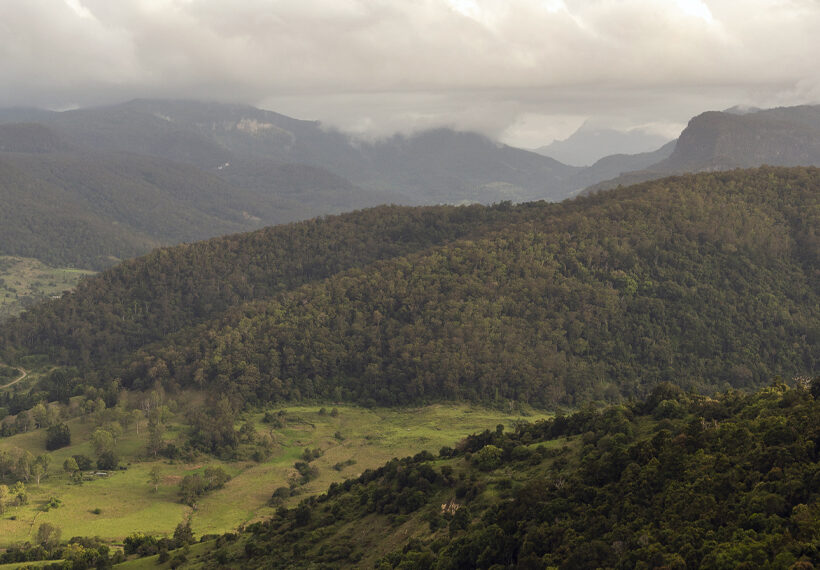
Day 3
Hiking, swimming holes, and wine in the Scenic Rim
Almost molten sunbeams stream from behind the crest of Mount Joyce to announce the start of my final day in Queensland. It’s 6 a.m. The urge to do absolutely nothing is a strong one. Nothing, that is, but sit on the deck of my cabin and rest in the presence of the land’s natural beauty. Twenty-three million years ago, the Scenic Rim was formed when a series of volcanic eruptions caused the Tweed Volcano to rise. Over the years, the volcano eroded (its current height is 3,793 feet), yada yada, and now the Scenic Rim is a region of interlocking mountains, plateaus, and valleys dotted with wineries, lodges, and national parks. Spectacular views are a dime a dozen, but this vista—encompassing the placid Lake Wyaralong, the mountains blanketed in eucalyptus forests, and Helios rising—is, at least for a few minutes this morning, all mine.
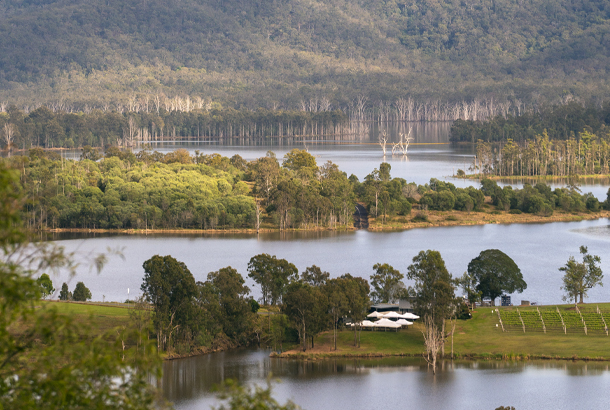
I arrived at my accommodations last night under cover of darkness. By the light of the moon, I unlocked the creaky metal gate, carefully walked over the cattle grid, and drove down a dirt road so bumpy it felt like a Coney Island coaster. I let myself into my WanderPod, a Modernist two-bedroom prefab cabin nestled into 1,200 acres at The Overflow Estate 1895 vineyard, where I found a bottle of vermentino waiting to greet me. I drank a glass and fell into bed, hardly considering where exactly I was.
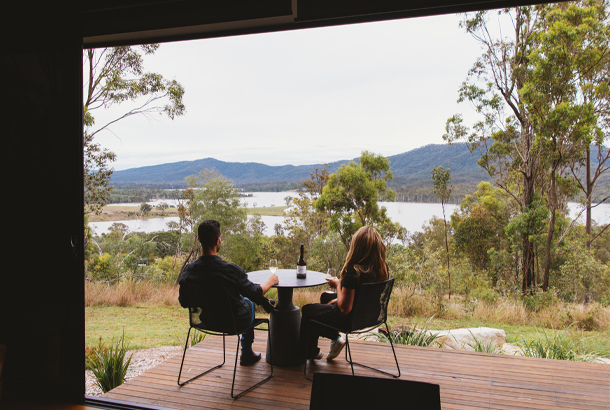
Now, in the morning, the landscape makes itself known—as does my hunger. Thankfully, my hosts left provisions. I brew some coffee, fry up some eggs and sausages and baby broccoli, and sit watching the mist clear the lake. This all seems so ancient, but Wyaralong itself was formed only in 2011, when a dam was built along Teviot Creek. (Hence the name of the winery, Overflow.) In fact, though the Scenic Rim’s geology is millions of years old, its current iteration is a recent phenomenon. Before 2008, what is now (heavily) marketed as the Scenic Rim consisted of three independent towns: the Shire of Boonah, the Shire of Beaudesert, and part of the City of Ipswich. The decision to unite them as a tourist destination was not without controversy, but the area has benefited from the catchy name and combined resources: Lonely Planet named it one of 2022’s top 10 places to visit.
Despite the buzz, it all seems quite unspoiled. The Scenic Rim boasts six national parks, and my first destination, for a hike, is Tamborine Mountain, home to wildlife (glow worms, koalas, echidnas) and mild life (retirees from the Gold Coast and Brisbane). I saunter slowly through the eucalyptus and gum trees for just 15 minutes before I come across Cedar Creek Falls. It’s only mid-morning, but it’s hot enough that I strip to my underwear and slip into the fall’s cool waters. All around me the trees whistle in the wind. The area’s not totally unspoiled, though: I watch another visitor force her friend to make TikToks of her posing for a good 10 minutes.
While the rugged topography of the Scenic Rim has kept its forests intact, its valleys have by and large been cleared. Some became sugar cane fields and banana plantations; others, paddocks and dairy pastures. Until recently, the 75 acres that now make up the Beechmont Estate, near Binna Burra, were the latter. Last year, however, the polo-playing workforce-software magnate Andrew Northcott turned the property into a luxury retreat. When I drive up, I eye the Wagyu cattle grazing, wondering if I’m about to have one of their relatives for lunch at the resort’s restaurant, The Paddock. Here, executive chef Simon Furley serves intensely flavorful, surprisingly inventive dishes. I opt for sourdough noodles and honey in pork broth and, as a main course, seared, dry-aged Wagyu with horseradish and soured cabbage. (Mercifully, the Wagyu is from a neighboring farm.)
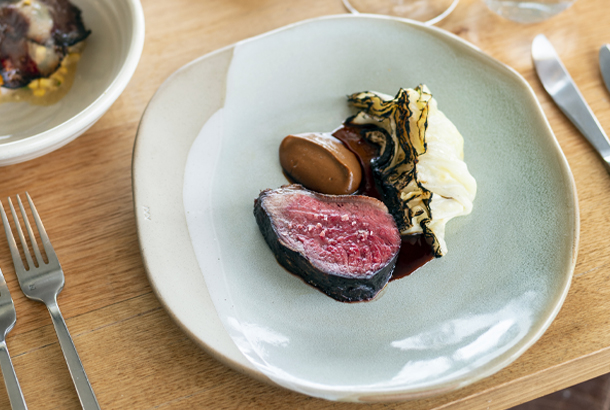
Recharged, I’m ready for some exercise. Many people come here to tackle the Scenic Rim trail, a four-day hike that travels 30 miles from Thornton View in the north to Cunninghams Gap in the south. Me? I drive less than 10 minutes to Lamington National Park, where the limits of my ambition for this afternoon are a 4.5-mile bushwalk to Kweebani Cave, an ancient dwelling of the Yugambeh people. Here, they roasted wallaby, goanna, bandicoot, and turtle (kweebani means “I cook” in Yugambeh), and the ceiling is still marked by ancestral smoke.
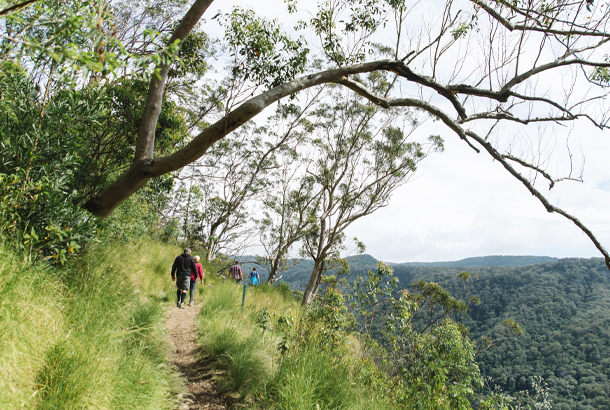
I finish the hike, walking down the road from the Binna Burra Lodge, and head out to sample another of the Scenic Rim’s draws. Like the majority of wineries in the area, Witches Falls mostly doesn’t grow its own grapes, sourcing the fruit instead from the Granite Belt. That needn’t taint the tasting, though, as Witches Falls makes some of the most interesting wine in the region. The owners, Jon and Kim Heslop, are among the few here experimenting with natural yeasts and minimal intervention (what the Italian anarchist wine critic Luigi Veronelli called a vino vero). “Ultimately, we consider ourselves custodians of the winemaking process and recognize that it’s the microorganisms that do the work,” says Jon, who founded Witches Falls in 2004. Recovering from my hike, I gaze at the gardens and happily sip a 2021 Wild Ferment Aglianico. The wine has good legs and a strong body—enough to make it up a mountain.
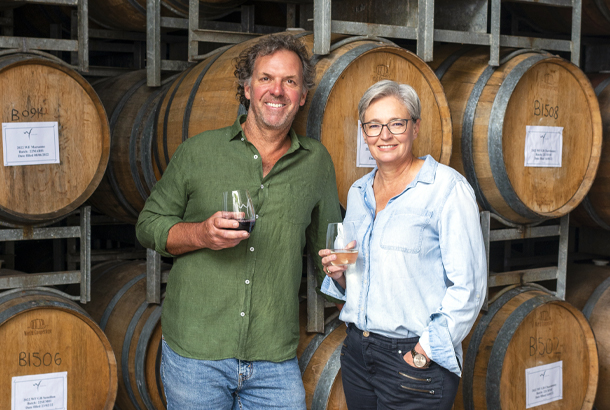
It’s 6 p.m. when I get back to my cattle grate and bumpy road. I make myself a simple dinner of chicken with white wine pan sauce, using the last of the vermentino, cream from a dairy up the road, and local onions, and head to the patio. Finally, a chance to do nothing. I build a fire and, exhausted from the day, watch the sun dye the land electric. As the moon rises, the lake begins to turn silver. The sparks of my fire dance up into the clear sky, where they mingle with the stars. As I look upon the three stars that form Orion’s Belt, I think about the last three days, so filled with action they flew by. Just like Brisbane, the Gold Coast and the Scenic Rim, the stars sparkle with sharp clarity, remote yet welcoming, undeniably breathtaking.
G’day, Brisbane: United has more service to Australia than any other U.S. airline, with nonstop flights to Sydney, Melbourne, and now Brisbane. Flights from San Francisco to Brisbane operate three times a week.
Next Up: Moorea Maori Tours: An Introduction to the Traditional Polynesian Way of Life

